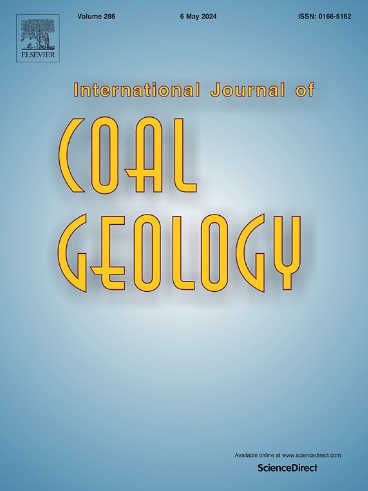Matrix permeability anisotropy of organic-rich marine shales and its geological implications: Experimental measurements and microscopic analyses
IF 5.6
2区 工程技术
Q2 ENERGY & FUELS
引用次数: 0
Abstract
Due to the presence of natural and/or preparation-related fractures, the anisotropy of the matrix permeability of shales is usually difficult to characterize. In this study, we used X-ray micro-computed tomography (XRμCT) imaging to select samples from the Lower Cambrian and Upper Ordovician Wufeng Formation and the Lower Silurian Longmaxi Formation of the Upper Yangtze Platform, China, showing no natural or artificial fractures. From these samples, cubic specimens were prepared with a wire saw and then re-inspected for fractures. Using a specially developed sample holder, the matrix permeability of these specimens were measured in the three principal directions using the pulse decay method with N2 as the flowing fluid. To analyze the microscopic lithological and structural controls on shale matrix permeability anisotropy, we employed a combined methodology using thin sections, focused ion beam-scanning electron microscopy (FIB-SEM), and permeability simulation.
The matrix permeability of the 15 shale samples ranged from 19.6 to 189.4 nD (19.6–189.4 × 10−21 m2) parallel to bedding and from 2.4 to 24.7 nD (2.4–24.7 × 10−21 m2) perpendicular to bedding, at a constant confining pressure of 1500 psi (10.3 MPa). Tectonic stress resulting from structural deformation leads to the deformation of OM pores within solid bitumen, which is the main factor controlling the matrix permeability. The ratio of the matrix permeability coefficients parallel and perpendicular to bedding (kx/kz) varied from 3.4 to 29.6, primarily due to cleavage zones along the bedding-parallel platy mica and clay altered from mica. The matrix permeability ratio in the two orthogonal horizontal directions (kx/ky) typically did not exceed a value of 2, but for samples with oriented graptolites and siltstone layers ratios as high as 2.9 and 2.3, respectively, were observed. The microfractures between graptolite and minerals, together with the elongated pores within the graptolites, enhance the permeability and facilitate gas flow along the bedding planes. The higher proportion of brittle minerals in siltstone renders it more prone to cracking compared to shale, which causes the anisotropy in the parallel-to-bedding directions.
For three shales from the strongly deformed northeast Chongqing with high-angle fractures parallel to the lamination, permeability parallel to bedding varied between 627.2 and 6820.3 nD, while permeability perpendicular to bedding ranged between 11.3 and 27.8 nD. The presence of microfracture parallel to the lamination in three shale samples resulted in a permeability higher by factors of 34 to 348 than the matrix permeability, leading to a higher anisotropy ratio between both horizontal and vertical directions.
富有机质海相页岩基质渗透率各向异性及其地质意义:实验测量与微观分析
由于天然和/或制备相关裂缝的存在,页岩基质渗透率的各向异性通常难以表征。在这项研究中,我们利用 X 射线显微计算机断层扫描(XRμCT)成像技术,从中国长江上游地台的下寒武统、上奥陶统五峰组和下志留统龙马溪组选取了没有天然或人工裂缝的样品。用线锯从这些样本中制备出立方体样本,然后重新检查裂缝。使用专门开发的样品支架,以 N2 为流动液体,采用脉冲衰减法测量了这些样品在三个主要方向上的基质渗透率。为了分析页岩基质渗透率各向异性的微观岩性和结构控制因素,我们采用了薄片、聚焦离子束扫描电子显微镜(FIB-SEM)和渗透率模拟相结合的方法。
本文章由计算机程序翻译,如有差异,请以英文原文为准。
求助全文
约1分钟内获得全文
求助全文
来源期刊

International Journal of Coal Geology
工程技术-地球科学综合
CiteScore
11.00
自引率
14.30%
发文量
145
审稿时长
38 days
期刊介绍:
The International Journal of Coal Geology deals with fundamental and applied aspects of the geology and petrology of coal, oil/gas source rocks and shale gas resources. The journal aims to advance the exploration, exploitation and utilization of these resources, and to stimulate environmental awareness as well as advancement of engineering for effective resource management.
 求助内容:
求助内容: 应助结果提醒方式:
应助结果提醒方式:


